
Have you noticed the word "regenerative" appearing on food labels and in marketing campaigns? It suggests a farming approach that restores soil health and combats climate change, but what does it really mean? More importantly, does it make a difference?
Currently, there is no universally accepted definition of regenerative agriculture, making it difficult to verify claims associated with it. Without standardized monitoring, reporting, and verification systems, consumers have no way of knowing whether products labeled as regenerative truly adhere to sustainable practices or if the term is being used for marketing purposes.
Regenerative agriculture is not a new concept. Gabe Brown, a well-known rancher from North Dakota and author of "From Dirt to Soil," has long championed the practice. His work demonstrates how eliminating synthetic fertilizers in favor of compost and diverse cover crops can revitalize depleted soil and increase crop yields. His success has inspired farmers around the world.
The origins of regenerative agriculture can be traced back to Robert Rodale of the Rodale Research Institute, who introduced the concept over 40 years ago. His definition emphasized the role of soil biology in nutrient recycling between plants, animals, and land, leading to healthier crops and improved productivity without reliance on agricultural chemicals. Even in 1943, British farmer and botanist Eve Balfour criticized industrial farming’s dependence on chemicals in her book "The Living Soil," which played a significant role in the organic farming movement.
There is considerable overlap between regenerative and organic farming. Both emphasize crop rotation to control pests and diseases, cover cropping to protect soil year-round, minimal or no plowing to preserve soil structure, and composting to nourish soil microbes. They also incorporate livestock, such as cows and sheep, to naturally fertilize the land. Both approaches prioritize soil health and aim to minimize chemical inputs.
However, regenerative agriculture is not simply another term for organic farming. Organic farming follows strict guidelines and certification processes that prohibit synthetic pesticides, fertilizers, and genetically modified seeds. Organic certification provides transparency and allows consumers to make informed choices, though it does not always measure broader environmental impacts such as biodiversity and greenhouse gas emissions.
Regenerative agriculture, on the other hand, operates as a set of flexible principles rather than rigid standards. While this adaptability allows farmers to tailor practices to their unique environmental and business conditions, it also creates ambiguity that can leave consumers uncertain about what the label truly represents.
This lack of clear definition raises concerns. For instance, an organic carrot may be grown in a monoculture system that lacks biodiversity, whereas a regeneratively farmed carrot could be cultivated in a diverse, cover-cropped system but still involve some synthetic inputs like glyphosate. Without industry-wide standards, regenerative farming’s credibility could be at risk. The introduction of certification programs aligned with regenerative principles could enhance accountability and transparency while preserving the core values of the movement.
Regenerative agriculture has the potential to expand carbon-neutral food production beyond niche products like chocolate, wine, coffee, and tea, reaching everyday staples like potatoes, wheat, bananas, and tomatoes. By reducing reliance on synthetic fertilizers, lowering fuel consumption, and promoting no-till and cover cropping techniques, regenerative farming can contribute to lowering greenhouse gas emissions and sequestering carbon in the soil.
If supported by clear standards and certification, regenerative agriculture could help build a food system that is not only sustainable but also carbon neutral. As the movement gains traction, it may drive changes in supply chains and influence corporate sustainability commitments. Supermarkets and businesses could prioritize sourcing food from regenerative farms as part of their environmental strategies.
So, what does this mean for your grocery shopping? While the term "regenerative" does not yet offer the same level of clarity as "organic," your purchasing choices still send a message. Buying products labeled as regenerative signals to retailers that consumers value soil health and sustainability.
To ensure meaningful impact, ask questions about product sourcing and farming practices. Look for transparency in labeling, including certifications or reports that verify environmental claims. Are greenhouse gas emissions measured? What tangible environmental benefits have been achieved?
The resurgence of regenerative agriculture holds promise for transforming food and farming systems. The future of carbon-neutral food depends on clear accountability measures and the evolution of the regenerative agriculture movement.

New Orleans Roast has partnered with Rouses Markets to launch Berry Gentilly Coffee, a unique blend inspired by the flavors of New Orleans. Available exclusively at Rouses Markets, this 12-ounce ground coffee combines sweet vanilla and fresh berries, reflecting the vibrant charm of The Big Easy.
Retailing for $7.99, Berry Gentilly Coffee was crafted to pair perfectly with Rouses’ signature Gentilly Cake—a beloved dessert featuring layers of velvety cake, rich Gentilly icing, and fresh seasonal berries. Fans of the cake can also enjoy a variety of in-store options, including:
• 8-inch Gentilly Cake
• Gentilly Cupcakes
• Mini Gentilly Cake
• Gentilly Cake Parfaits
• Gentilly Cake by the Slice
Made with 100% Arabica coffee beans, Berry Gentilly Coffee enhances the indulgent experience of Rouses’ bakery offerings while delivering a smooth and flavorful brew.
Led by roastmaster Felton Jones, New Orleans Roast is known for its commitment to quality and its deep connection to the city’s coffee culture. From Southern Pecan to blends featuring hints of French chicory, the brand brings the rich flavors of New Orleans straight to your cup.
For more information about New Orleans Roast’s coffee, tea, and chicory selections, as well as home and business delivery options.

A new coffee destination in San Antonio, Texas, is redefining the cafe experience with a focus on simplicity and presence. NoFi Slow Bar, located in the Beacon Hill neighborhood, embraces a minimalist approach—no syrups, no sweeteners, no paper cups, and no Wi-Fi. Drinks are served exclusively in ceramic cups for in-house enjoyment, encouraging customers to slow down and fully appreciate their coffee.
“We wanted to push the envelope and present astounding coffees and teas in their most basic form,” said NoFi Slow Bar Co-Owner Hana Buck. “As we evolve, we are certainly interested in exploring craft coffee beverages, perhaps with unconventional brewing methods or additional ingredients, mixologist-style.”
Despite the lack of takeout options, the reception has been overwhelmingly positive. “Folks have been graciously receptive to our policy and supportive of our vision for a slower-paced coffee experience,” Buck said. “No one has been so bold as to bring their own cup—yet. And if they so choose, that’s their prerogative.”
The 1,000-square-foot space is designed to foster relaxation, with earth tones, wood and stone surfaces, and warm lighting. Thoughtful details, such as a Tiffany stained glass lamp and a bonsai tree, contribute to the shop’s calming atmosphere. Guests can also enjoy music played from vinyl records through a vintage high-end sound system.
“NoFi was meant to be a place for intention and mindful presence,” Buck said. “It feels like the shop has always been there, sparking a pseudo-familiarity that makes you feel right at home. The black-and-white mosaic tile floor and dark, moody aesthetic make you feel like Ernest Hemingway, if he drank coffee instead of rum.”
Buck and her husband, Rolando Almaraz, also own Bright Coffee, a San Antonio multiroaster cafe that opened in 2022. While both shops highlight high-quality coffee and premium audio experiences, their aesthetics and approaches differ. Bright Coffee features a mid-century-modern design with mirrored walls and wooden floors, while NoFi’s ambiance is darker and cozier. Bright’s menu includes creative lattes with flavors like pistachio-cardamom, red bean, and sesame, whereas NoFi focuses on pure, unadulterated coffee.
“The design of NoFi and Bright are polar opposites, but they are definitely sister shops in some ways,” Buck said. “There is a feeling of coziness in both shops that is prioritized. We want customers to feel comfortable and settle in at both.”
Buck’s journey in specialty coffee began in 2013 with her first job at Starbucks. Over the years, she worked at various San Antonio specialty coffee shops, including Estate Coffee Co., where she refined her expertise.
At NoFi, she continues exploring the possibilities of coffee with a Slayer Espresso V3 machine, an Option O Lagom 01 single-dose grinder with Mizen 102-millimeter blind flat burrs, and a Ground Control Cyclops for larger batch brews. The slow bar also features a selection of Fellow kettles for coffee and Brewista kettles for tea.
Roasting takes place in a 400-square-foot space on-site, where NoFi partner David Falk oversees the process. The cafe primarily sources green coffee from Ally Coffee and Crop to Cup. While there are plans to transition both NoFi and Bright to exclusively house-roasted coffees, quality remains the top priority.
“The main priority is a tasty cup,” Buck said. “Outside of that, we want consistency and uniqueness. We want to share the spectrum of what coffee can be with our city. If we can roast a crisp, clear Panama Gesha or a Colombia co-ferment well, and our guests can have a wonderful experience, that’s a win for us.”
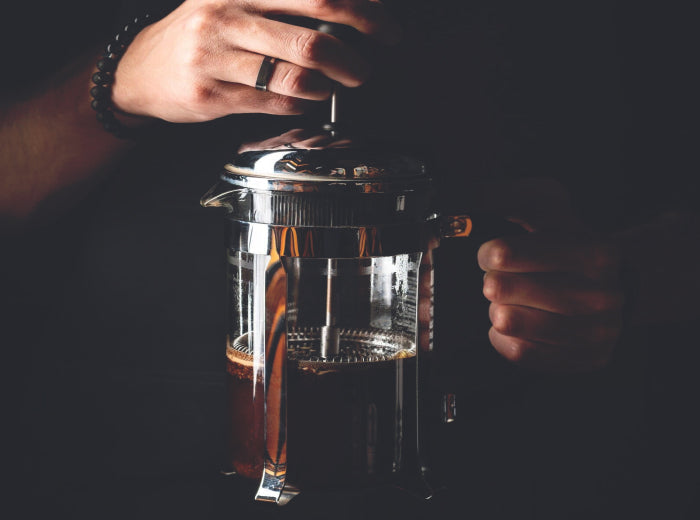
Dutch Bros (NYSE: BROS) has seen a remarkable 87% surge in share value over the past three months, capturing the attention of investors. Starbucks (NASDAQ: SBUX) is also on an upward trajectory, with renewed enthusiasm following the appointment of a top restaurant executive to lead the business. But between these two coffee giants, which stock presents the best investment opportunity right now?
Dutch Bros: Betting on Growth
Dutch Bros has built a strong reputation for excellent customer service and a highly customizable menu, primarily through its drive-thru store model. Its rapid expansion is a major factor driving investor interest.
In the third quarter of 2024, Dutch Bros reported $338 million in revenue, reflecting a 160% increase from the same period three years prior. This impressive growth is fueled by an aggressive store expansion strategy, with the company now operating 1,000 locations—double its footprint from Q3 2021. Over the next 10 to 15 years, management envisions growing to 4,000 locations, a move that could significantly boost revenue.
Currently present in 18 states, Dutch Bros still has substantial room for expansion in the U.S. and beyond. The market appreciates its growth potential, as reflected in the stock’s recent surge. However, this enthusiasm has driven the stock’s price-to-sales (P/S) ratio to 4.9, the highest it has been in three years.
For growth-oriented investors, Dutch Bros presents a compelling opportunity, though its long-term success is not guaranteed. As a relatively small company, it has yet to establish durable competitive advantages that would ensure sustained profitability.
Starbucks: A Turnaround Play
While Dutch Bros is enjoying investor excitement, Starbucks remains the dominant force in the coffee industry. The company operates 17,049 stores in the U.S. and 40,576 worldwide, generating $9.4 billion in revenue in its latest fiscal quarter—28 times more than Dutch Bros.
Despite its scale, Starbucks has faced challenges in driving foot traffic. Same-store sales (SSS), a key industry metric, declined for the fourth consecutive quarter in fiscal Q1 2025, which ended on December 29, 2024. To address these issues, Starbucks has brought in Brian Niccol, former CEO of Chipotle Mexican Grill, who led Chipotle’s impressive turnaround. He has already begun implementing strategies to enhance the customer experience and revitalize the brand.
Starbucks maintains several competitive advantages that Dutch Bros lacks. Its global brand recognition, customer loyalty, and massive scale provide significant leverage. The company’s strong brand positioning allows it to command premium pricing, while its size enables cost efficiencies in marketing, digital upgrades, and supply chain management.
While Dutch Bros offers exciting growth potential, Starbucks appears to be the safer long-term investment. Its deep economic moat and global dominance provide stability, making it a less risky bet. Additionally, Starbucks’ P/S ratio of 3.4 is 31% lower than that of Dutch Bros, making it the more attractively valued option.
The Verdict
For investors seeking stability and a well-established brand, Starbucks presents a compelling opportunity. However, those willing to take on additional risk in exchange for high growth potential may find Dutch Bros an appealing investment.
Ultimately, the best choice depends on an investor’s risk tolerance and investment strategy.
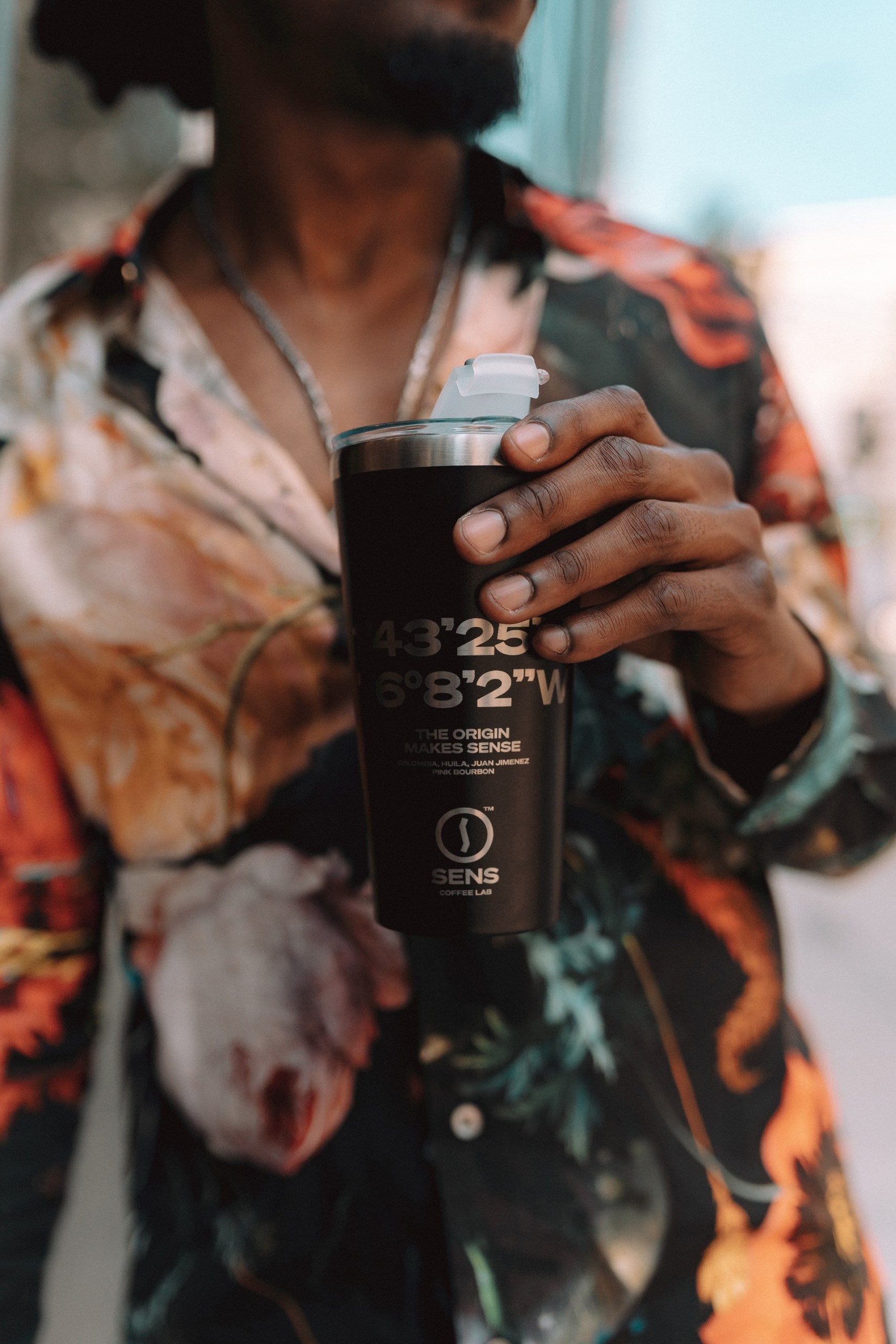
Klim Coffee Roasting Co. has unveiled its flagship roastery cafe in Mount Waverley, Victoria, Australia, within a new boutique business development. Designed by the architecture firm SuiL, the space brings together craftsmanship and transparency, allowing customers to experience the full coffee-making process.
Following the client’s vision, the design features a distinct “grid” and “box” concept, creating a structured yet open environment. The grid system, inspired by existing window mullions, forms the structural framework of the cafe. This framework defines key areas within the space, including the cafe counter, retail display, communal tables, bar seating, and the centerpiece of the design—the roast room, known as “The Box.”
“The grid design sets out the canvas for the new identity,” SuiL explained. “It serves as the structural backbone of the new interior, maximizing both functionality and visual connection through the glazing frontages.”
At the heart of the cafe, “The Box” is a transparent roasting room housing a Loring machine, offering customers a clear view of the roasting and packaging process from all angles. “From within the roast room, one can see all activities happening in the cafe inside and outside, fostering a strong sense of connection,” said SuiL.
The main entrance leads directly to the cafe counter, where a bi-folding door seamlessly integrates indoor and outdoor spaces. Bar seating at the counter encourages engagement between baristas and customers, while a handmade communal table sits between the roastery and the bar, offering a shared dining experience with unobstructed views of the coffee-making process.
Material choices throughout the space reflect a balance between warmth and industrial elements. “The new design system employs wood and timber to create a warm, bright atmosphere, in stark contrast to the original cold concrete and aluminum feel,” SuiL noted. Porcelain slabs and steel plates are integrated into the counter, tables, and display shelves, ensuring that the roast room remains the focal point of the space.
Klim Coffee Roasting Co.’s new flagship cafe is a testament to thoughtful design, bringing together community, craftsmanship, and transparency in coffee production.
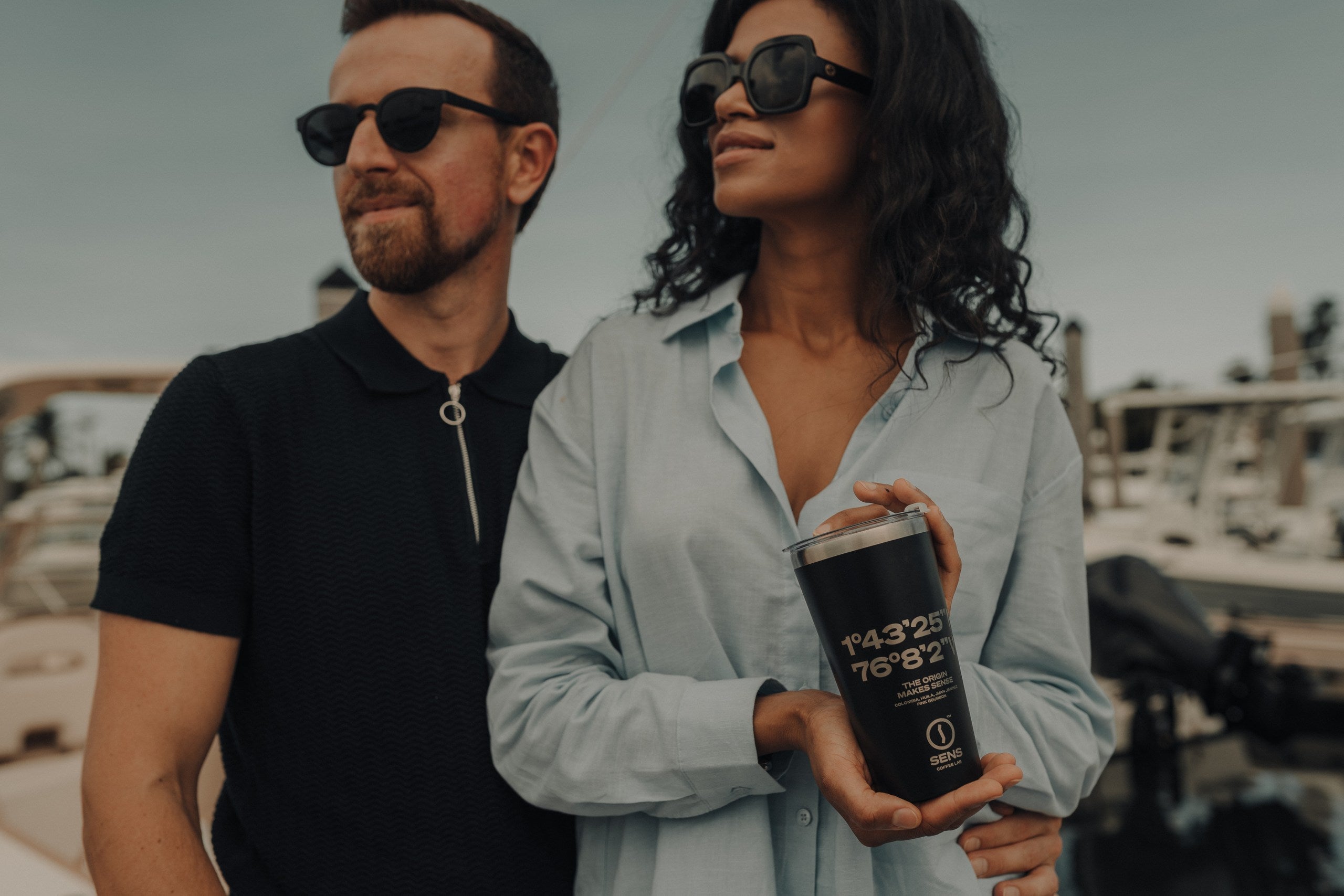
A new study suggests that regular coffee consumption may offer cognitive benefits for individuals with atrial fibrillation (AF), a common heart arrhythmia that significantly increases the risk of stroke, cognitive decline, and dementia.
The research, which included more than 2,400 participants, found a dose-dependent relationship between daily coffee intake and improved cognitive performance. Even one cup of coffee per day was associated with measurable cognitive benefits, while those consuming more than five cups daily demonstrated the highest cognitive scores. According to the study, these improvements translated to a reduction in “cognitive age” by approximately 6.7 years, based on standardized assessments such as the Montreal Cognitive Assessment (MoCA).
Conducted in Switzerland and recently published in the Journal of the American Heart Association, the study highlights the potential role of coffee in cognitive health for patients with AF. The researchers noted that AF affects around 5% of individuals over 65, with prevalence increasing significantly with age. The condition is associated with a fivefold increase in stroke risk and a heightened likelihood of cognitive impairment and dementia.
The study also revealed that coffee consumption was linked to lower levels of key inflammatory markers among patients with AF. Interestingly, even among those with higher health risks—including smokers, individuals with diabetes, and those with higher BMI—higher coffee intake was still associated with better cognitive function.
While the findings suggest positive effects of coffee on brain health, the study acknowledged potential risks of high coffee consumption, including elevated blood pressure in some individuals. However, recent research has found no significant link between moderate-to-high coffee intake—up to five cups daily—and an increased risk of arrhythmias, AF, or other cardiovascular issues.
Ultimately, the Swiss research team concluded that “coffee consumption in elderly patients with AF should not be discouraged,” reinforcing the potential benefits of moderate coffee intake for cognitive function in this high-risk population.

For Beamlak Bekele, coffee has always been a part of life. One of her earliest memories is watching her father cup coffee in a laboratory in Addis Ababa, Ethiopia. Despite growing up in a coffee-centered family, she initially pursued architecture and urban planning, never expecting to follow in her father’s footsteps—let alone place second in Ethiopia’s national barista championship.
At the encouragement of her sister Sofia, Bekele took a quality control course and began working as a coffee laboratory assistant at Addis-based Tsega FTA. She later became a green coffee export manager with Siniws Business, where she gained a deeper understanding of the global coffee market and the inequities within it.
“I saw a lot of injustice and inequity,” she said. “A lot of people weren’t passionate about coffee. Many in Ethiopia see it only as a means for foreign exchange or a way to import goods.”
Determined to make a difference, Bekele began working with the gender-equity-focused nonprofit Equal Origins and later became the project coordinator for the Ethiopian chapter of the International Women’s Coffee Alliance. Her current work focuses on inclusivity, coffee education, and environmental protection. She also worked part-time as a barista at Cherish Addis Cafe, where she trained for the national barista championships.
“I feel very privileged,” she said. “Being fluent in language gives me opportunities that many in coffee, especially women at the farm level, don’t have. They have little access to education, training, or a global perspective on coffee. There’s still a long way to go, and those of us with privilege have a responsibility to be the voice for others who don’t have the same opportunities.”
Bekele strongly believes in a mutual exchange of knowledge, emphasizing that people in coffee-producing countries have just as much to teach as those in consuming countries.
“People come to Ethiopia for origin trips, and we are always welcoming,” she said. “But when it comes to reciprocity, people from here can’t afford to attend most international expos. The ironic part is that when important discussions about producer countries happen, we rarely see actual representation from those countries.”
Given her passion for fostering meaningful dialogue, Bekele was grateful to participate in the recent Barista Exchange with Cxffeeblack.
“It was a great experience to have a space where we could share not just the challenges we face in the industry but also our hopes for the future,” she said.
What about coffee excites you the most?
I’ve always been curious about how things work, and coffee is such a vast topic—the science, the art, the sensory skills, the barista craft. I’m always eager to learn more.
Beyond that, I love the passion people have for coffee and how it connects them. Despite the injustices in the industry, coffee fosters deep connections across the world. That bond between people, regardless of geography, is powerful, and I believe it has the potential to drive positive change in the industry.
What about coffee troubles you the most?
The injustices in the industry. It’s not fair that people from producing countries don’t have the same opportunities to voice their opinions or participate in global conversations.
What would you be doing if it weren’t for coffee?
I studied architecture and urban planning, but I don’t think I would have stayed in that field. I’m fascinated by how people’s experiences shape who they are, so I’d probably be a psychologist or therapist.

Two well-established Canadian coffee companies are coming together as Vancouver-based Artigiano acquires Salt Spring Coffee, a Richmond-based organic coffee roaster.
Originally founded in 1999 as Caffè Artigiano, Artigiano now becomes Canada’s second-largest roaster of organic-certified coffee. The company currently operates 17 cafes across British Columbia and one in Calgary, Alberta, with plans to expand to 30 locations by the end of June, primarily in metro Vancouver. Alongside its retail presence, Artigiano also offers direct-to-consumer and wholesale coffee sales.
The acquisition significantly broadens Artigiano’s coffee offerings, bringing in Salt Spring Coffee’s expertise in sustainable and organic coffee sourcing. Salt Spring, which does not operate its own cafes, has built a strong reputation for its environmental and social sustainability efforts. It was the first company in Canada to introduce Regenerative Organic Certified coffee.
Founded in 1999 by Robbyn Scott and Mickey McLeod, Salt Spring Coffee is now headquartered in Richmond. McLeod described the merger as a natural fit, emphasizing Artigiano’s dedication to quality, ethical sourcing, and community engagement—values that have been at the heart of Salt Spring Coffee since its inception.
The financial details of the acquisition have not been disclosed.
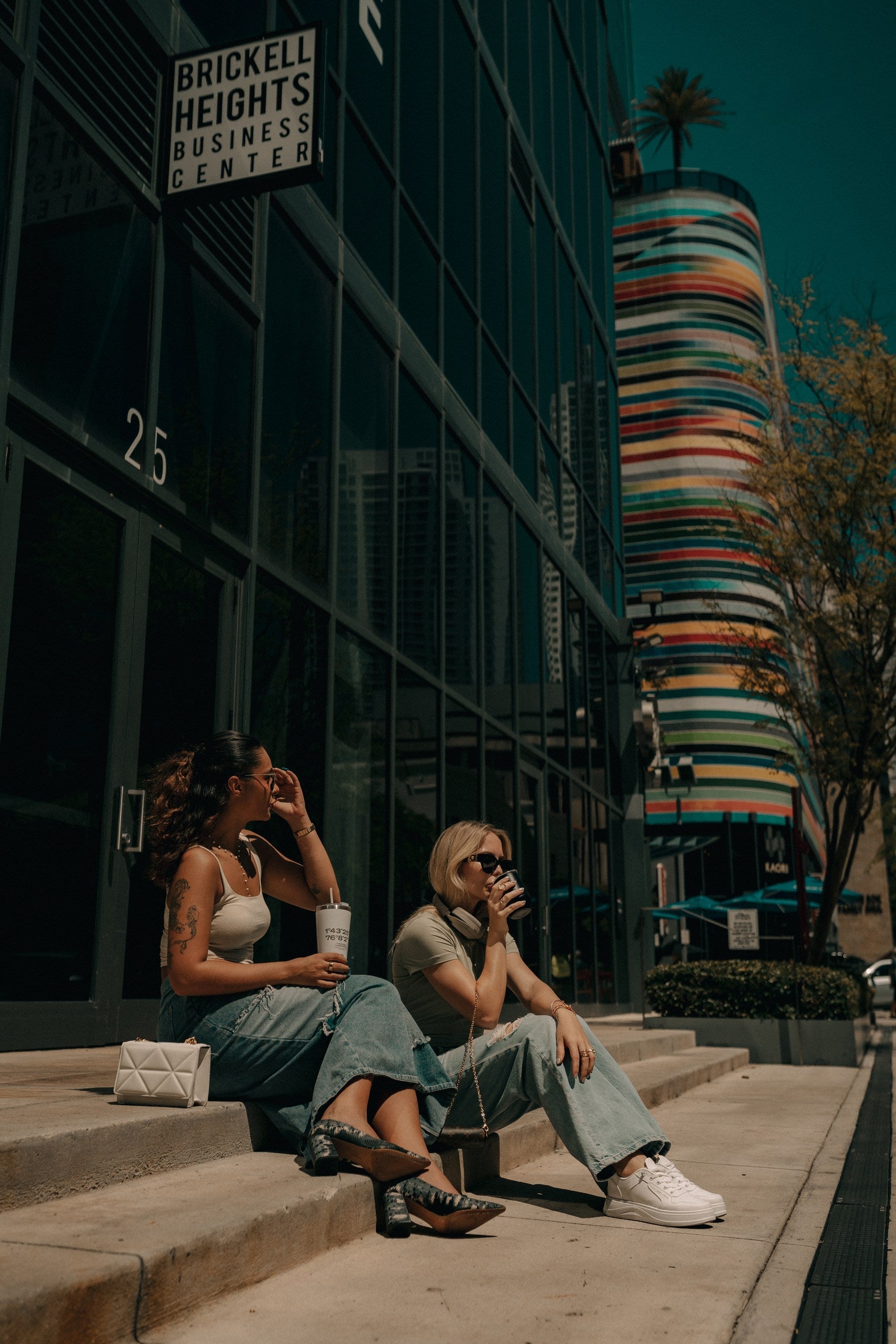
As global consumption of specialty coffee continues to rise annually, consumers are becoming more discerning about high-quality options. In this maturing market, it is increasingly challenging for roasters to distinguish themselves among a growing number of brands seeking a unique position.
However, this competition fosters innovation. Roasters are exploring more engaging methods to connect with existing customers and attract new ones, driving them to be more inventive.
Traditionally, coffee packaging has served as a means to capture consumers' attention, acting as a powerful tool for marketing and brand differentiation. In recent years, a growing number of roasters have invested in sustainable, sophisticated, and visually appealing packaging that narrates their brand story and supports a circular economy model in coffee, thereby encouraging genuine innovation in the broader industry.
I spoke with Mark Zhou, the founder of MTPak Coffee, to understand how coffee roasters are becoming more inventive and imaginative with their packaging.
Packaging: Balancing Functionality and Creativity
Coffee is a perishable product, with its freshness and quality diminishing over time, typically within one to three months after roasting. For specialty coffee, which offers nuanced flavors and commands a higher price due to its superior quality, maintaining freshness is crucial.
"It's well-established that specialty coffee packaging needs to be high-barrier, preserving the delicate flavors and aromas of high-quality lots," says Mark Zhou, founder of the sustainable coffee packaging brand MTPak Coffee.
High-barrier packaging safeguards beans from oxygen, moisture, light, and heat—the four primary elements that can quickly degrade coffee's sensory characteristics. Multi-layer packaging utilizing advanced materials like metallized films, vacuum-sealed pouches, and one-way degassing valves creates an optimal environment that maintains product integrity from roasting to brewing.
"But packaging is now also a statement piece," Mark adds. "Roasters rely on bold colors, unique shapes and designs, logos, and illustrations to stand out, pushing the boundaries of their creativity."
In the post-pandemic era, coffee brands have faced several persistent challenges that have fundamentally changed their operations. Increased business costs, arabica futures reaching a historic high of $3.78 per pound in late January 2025, and rising interest rates have tightened already narrow profit margins.
"Rising business costs and inflation rates have intensified market competition, forcing roasters to find new ways to stand out," Mark says. "Packaging has long been an effective way for them to do this, but now more than ever, it's a useful tool for brands to catch the attention of increasingly discerning consumers."
Consequently, packaging has evolved beyond its traditional role as a simple container, becoming an effective medium for roasters to establish meaningful connections with customers. Through thoughtfully designed packaging, brands can communicate their ethos, values, and unique narratives, transforming a simple coffee bag into a storytelling canvas.
How Coffee Roasters Are Driving Innovation
The third wave and specialty coffee culture emerged from a desire to "do things differently," aiming to highlight quality, craftsmanship, and artistry. Roasters have long leveraged their creativity to emphasize these aspects of their businesses, including their packaging.
Amid rising coffee prices, inflation, and increased business costs over the past few years, there has been a growing consumer push for more sustainable practices. Research from Nielsen indicates that 46% of consumers expect brands to lead in creating genuine sustainable change, placing the responsibility on roasters to initiate and drive progress.
Given its proximity to the end of the supply chain, roasted coffee packaging often becomes the focus of this movement. Sustainability has become non-negotiable, with customers expecting recyclable and biodegradable packaging options.
To meet this demand, more roasters have invested in high-barrier materials like kraft paper, low-density polyethylene (LDPE), and polylactic acid (PLA) that maximize freshness and quality while allowing consumers to responsibly dispose of the packaging, minimizing environmental impact.
Evolving Packaging Design
Alongside innovations in sustainability, packaging design and branding have also evolved. Roasters now increasingly use bold color schemes, eye-catching fonts, illustrations, and even unique packaging shapes to communicate distinctive brand identities and the unique character of each coffee.
Research indicates that color is the most important cue in product packaging. Striking color palettes can evoke specific moods or associations with certain origins and flavors, heavily influencing the consumer experience.
Unique typography communicates brand personality, ranging from minimalist and modern to rustic and artisanal. Innovative packaging shapes, such as unconventional bag structures or custom die-cuts, further distinguish roasters in a crowded marketplace.
Information cards and limited-edition designs have also emerged as critical differentiators, allowing roasters to express brand identity and connect with consumers through visual storytelling. Innovative label technologies now incorporate augmented reality features, such as QR codes that provide information about coffee origins and farms, generating excitement among consumers and disseminating information.
Recognizing True Innovation
By continuously pushing the boundaries of innovation in the coffee industry, roasters support its future growth. Packaging has become a canvas for true creativity, allowing brands to tell their stories.
Rewarding innovation and sharing these stories can inspire more roasters and coffee brands to follow suit, bolstering the growth of the specialty coffee market.
As part of the competition, international specialty coffee roasters of all sizes are invited to share their packaging. A panel of expert judges will select one primary winner and award them $5,000 in cash to invest in their business.
"The Packaging Reimagined contest builds off the success of the MTPak Coffee Packaging Design Awards, which were designed to highlight, recognize, and reward the hard work and dedication of creating stand-out coffee packaging," Mark adds. "As a sustainable packaging company, we want to honor the exceptional work we see in design."
The winner and all finalists will receive promotion on MTPak Coffee's social media channels, newsletter, and website, as well as an editorial feature that shares the brand's story and packaging design.
How to Apply
Before applying, consider the following criteria:
- Is the imagery or design used on the packaging innovative, unique, and aesthetically appealing?
- Does the packaging design do something completely innovative and new, such as using unique materials or accessories?
- Is the packaging innovative in how it is used, for example, through bag takeback schemes or unique ways for customers to open the bags?
- Is the packaging innovative in maintaining the coffee's freshness?
- Does the packaging do anything unique to reduce storage space?
- Does the packaging feature anything visual or practical that you cannot find elsewhere?
- Is the overall presentation of a high professional standard?
- What information is relayed on the bag, and is it effective in its goal?
- How does the coffee bag design contribute to the enhancement or improvement of the knowledge of the coffee community?
- Does the process of creating the packaging minimize material use or incorporate recycled, upcycled, or otherwise sustainable materials?
The MTPak Coffee Packaging Reimagined application form can be found here. The deadline to apply is March 6, 2025. The finalists will be announced on March 12, and the winners will be announced on March 19.
As coffee packaging continues to evolve, it represents far more than a simple container; it has become a dynamic canvas for innovation and brand storytelling.
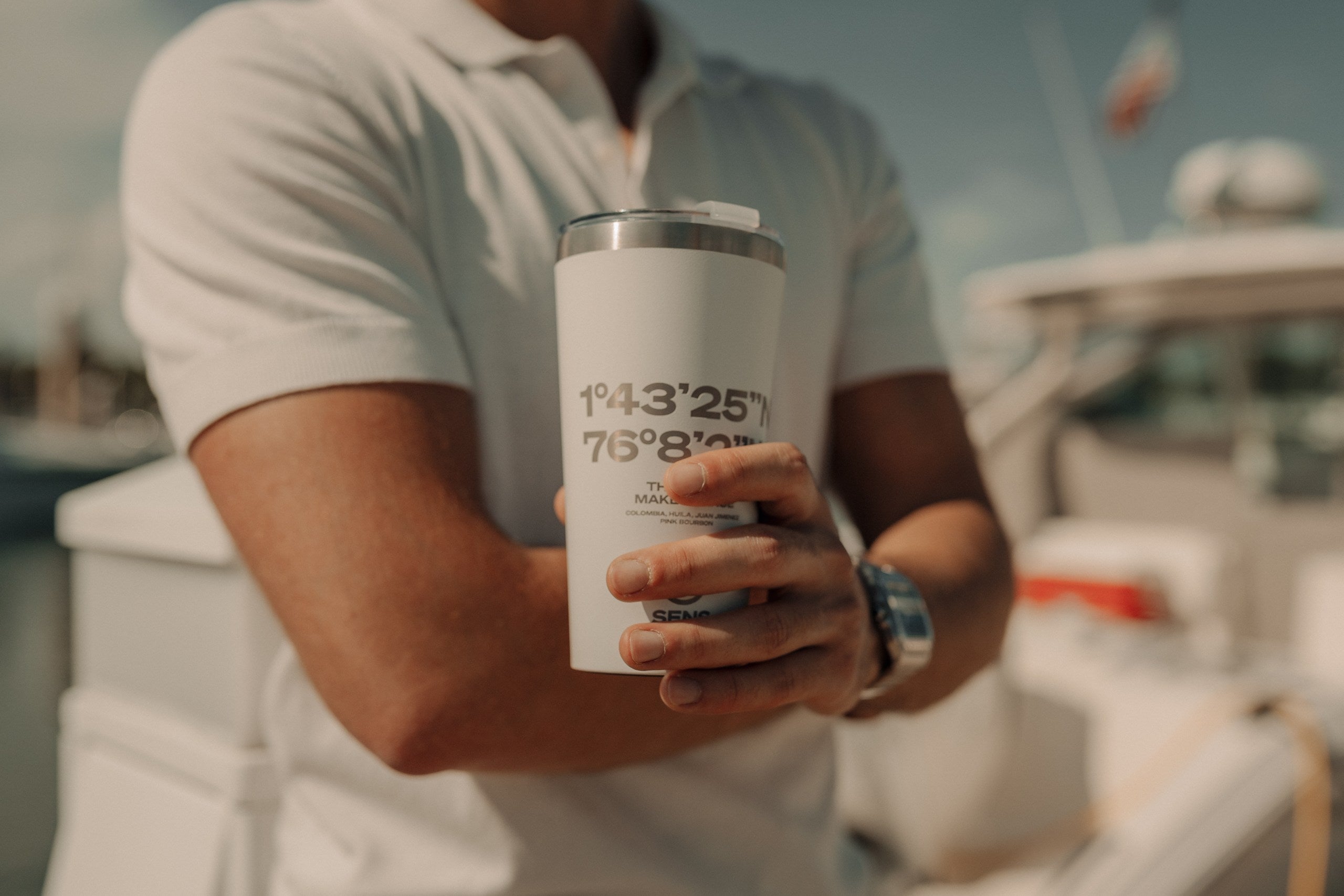
Ben Affleck is bringing back the DunKings, the fictional music group from Dunkin's 2024 Super Bowl commercial. This time, he's joined by his brother, Casey Affleck, and fellow Bostonian Jeremy Strong. A teaser for the new ad aired during the 2025 Grammy Awards, with the full commercial set to debut during Super Bowl LIX on February 2, 2025.
In the teaser, Strong is humorously depicted immersing himself in a vat of coffee beans, referencing his well-known method acting approach. The clip shows him saying he's "just trying to find the character," highlighting his dedication to fully embodying his roles.
The DunKings first appeared in a 2024 Super Bowl ad featuring Ben Affleck alongside Matt Damon and Tom Brady. In that commercial, the trio, dubbed "the Boston Massacre," humorously interrupted Jennifer Lopez's music studio session, much to her embarrassment. Affleck and Lopez were married at the time but officially split in August 2024.
The new teaser ends with the message, "Suit up, America," building anticipation for the full commercial during the Super Bowl.

Honey processing became closely associated with Costa Rica in the late 2000s. Following a significant earthquake in 2008, the Costa Rican government imposed water usage restrictions, prompting coffee producers to innovate their processing methods.
From this necessity, honey processed coffee emerged. Known for its intense sweetness, pronounced body, and complex flavor notes, this processing method quickly attracted the attention of specialty coffee buyers, leading to increased demand.
Today, honey processing is considered one of the big three methods, alongside washed and natural processes. Producers have experimented with varying levels of mucilage retention on the beans to create a range of flavor profiles, resulting in the black, red, yellow, and white honey processed coffees we are now familiar with.
In recent years, novel and advanced processing methods have emerged, allowing producers to differentiate their coffees with unique and unconventional tasting notes. As these techniques have gained popularity, honey processing has become more commonplace and is sometimes viewed as less exciting compared to methods like anaerobic fermentation and carbonic maceration.
However, producers continue to innovate with honey processing. To learn more, I spoke with Jorge Raul Rivera, a three-time Cup of Excellence-winning coffee producer in El Salvador, and Jamie Treby, coffee strategist at DRWakefield.
The Rise of Honey Processing in the Coffee Industry
Certain coffee origins are closely linked to specific processing methods. Brazil is renowned for its natural processed coffees, while washed coffees are particularly popular in Kenya.
Costa Rica pioneered honey processing, developing it out of necessity after government-imposed water usage restrictions in the late 2000s.
Costa Rica is the most well-known origin for honey processed coffees, particularly with the different colors of honey, says Jamie Treby, a coffee strategist at green coffee trader DRWakefield. There are farms that talk about innovating as far back as the early 2000s.
Borrowing from the pulped natural processing used in Brazil, the honey process gets its name from the sticky mucilage left intact on the beans as they dry. Unlike washed coffees, where the skin and pulp are entirely removed, and naturals, where the entire cherry dries intact, honey processing lies somewhere in between. Cherries are pulped to remove the outer skin, leaving behind the mucilage.
Producers then leave varying levels of mucilage intact as the coffee dries, creating different flavor profiles and textures. The different colors imply different percentages of mucilage left on the beans before drying. Typically, the higher the amount of mucilage, the more sugars will be present as the coffee dries, leading to sweeter flavors.
The most common types of honey processed coffees are:
Black honey - 75 to 100 percent mucilage, most similar to natural processing
Red honey - 50 percent mucilage
Yellow honey - around 25 percent mucilage
White honey - around 10 percent mucilage, akin to a washed coffee
Growing Demand
Initial responses to honey processing were skeptical, with some claiming the flavors were too wild or unclean. However, as consumer demand changed, interest in honey processed coffees grew.
More specialty coffee roasters began sourcing honey processed Costa Rican single origins, helping to establish the country's global reputation. These coffees also performed well at auctions, receiving high scores and fetching high prices.
Over time, producers in other countries started to experiment with honey processing.
Graciano Cruz, a pioneering producer from Panama, brought honey processing to El Salvador, says Jorge Raul Rivera, an award-winning coffee producer in El Salvador. In the beginning, everyone was apprehensive, but it's not rocket science, and we got to understand how to do it well pretty quickly.
For that reason, three of our first places at Cup of Excellence are honey processed Pacamara.
Jamie notes that honey processing is also becoming more popular in countries like Guatemala, Vietnam, Myanmar, Peru, and Uganda, underscoring its widespread appeal.
The New Normal in Specialty Coffee
As more countries began processing black, red, yellow, and white honey coffees at higher volumes, the global market quickly became saturated with them. With varying flavor profiles and mouthfeel, these coffees appealed to a wide range of consumers, allowing coffee shops and roasters to meet diverse demands.
Over time, honey processed coffees became standard offerings in the specialty coffee market. Once considered differentiated and even too funky, they no longer stood out as consumers sought more interesting and unique flavor experiences.
When we started our farm decades ago, we processed 90 percent washed coffees and only 10 percent non-washed, Jorge explains. Nowadays, it's the opposite; we do 80 percent non-washed and 20 percent washed because that's what consumers want.
The proliferation of experimental processing methods in recent years, most notably various types of controlled fermentation such as anaerobic and lactic fermentation, has captured some of honey processed coffee's market share. Offering even more complex, layered, and interesting flavor profiles, advanced and novel processing techniques have become more common in specialty coffee.
At the same time, standardization became a challenge for honey processed coffees.
The percentage of mucilage left intact, as well as fermentation and drying times, all vary, so what one producer creates as red might be another producer's yellow or black, Jamie explains. We have producers that offer red honey coffees, but the percentage of mucilage and fermentation and drying times are all different, so the colors cover a broad spectrum.
White honey coffees, in particular, can be close to washed coffees, but how producers develop them varies, he adds. They can be pulped with 5 percent mucilage left on, or a short drying time with 90 percent of the mucilage intact.
Looking Ahead
Despite being considered a standard processing method by many, producers in Costa Rica and beyond continue to innovate with honey processed coffees.
While some use the processing method as a base to build on further flavor development, others have created new types of honey processed coffees. Pink, orange, and golden honeys have appeared in specialty coffee shops and roasters, although the exact mucilage percentages and fermentation and drying times are unknown. This drives innovation but also complicates standardization.
Honey processing has always been about different variations. In the beginning, people thought you could only do honey, natural, and washed coffees, but you can do so many variations, Jorge says. That is what's so interesting and special about it.
There's no specific variety that works best, too. Pacamaras work well as honey processed coffees, and Geshas, when done well without too much fermentation, taste amazing. It's a matter of craftsmanship.
There is immense value in honey processing, especially in producing countries where access to water is scarce. For this reason, producers will continue to leverage this processing method, whether on its own or as a foundation for further innovation.

January 10, 2025
For the first time, India’s coffee exports have surpassed the $1 billion mark, driven by a 29% increase in export value between April and November 2024, according to the Centre for Monitoring Indian Economy (CMIE).
Robusta demand surged as global consumption increased and buyers rushed to secure shipments ahead of the EU Deforestation Regulation (EUDR), which came into effect in December. India, already the fifth-largest robusta producer, may climb further as roasters look for cost-effective, high-quality alternatives amid rising global market prices.
Starbucks Introduces the Cortado to U.S. Menus
Starbucks has added the **cortado**—a drink traditionally made with equal parts espresso and milk—to its U.S. offerings. Known for larger-sized beverages, the coffee giant’s new 8oz cortado is twice the size of typical specialty café versions.
The addition includes a **Brown Sugar Oatmilk Cortado**, blending brown sugar syrup, cinnamon, and oat milk. While the move has garnered attention, its impact remains to be seen as the company grapples with rising costs and changing consumer expectations.
---
Other Top Headlines
- Nuclear Techniques to Authenticate Coffee Origins: Scientists from the International Atomic Energy Agency and the UN FAO are using nuclear technology to trace coffee’s geographic origins, improving authenticity and disease resistance. (Vienna, Austria)
- Luckin Coffee Expands to Hong Kong: The Chinese coffee chain opened five outlets in Hong Kong in a single day as part of its global expansion. (Hong Kong)
- Dutch Coffee Championships Kick Off: Finals for the Dutch Barista, Latte Art, and Brewers Cup Championships will take place at the Horecava trade show in Amsterdam, 13–16 January. Winners will represent the Netherlands in the World Coffee Championships later this year. (Amsterdam, the Netherlands)
New Launches and Innovations
- Nescafé Debuts Liquid Espresso in the U.S.: Made with 100% arabica beans, this instant espresso concentrate comes in black and vanilla flavors, launching February 2025. (Arlington, Virginia, U.S.)
- Peet’s Coffee Introduces Protein Lattes: Their new Vitality Menu includes protein-enriched drinks and vitamin-packed winter beverages designed to boost immunity. (Berkeley, California, U.S.)
- Ecotact Launches Valve Packaging:New hermetic bags with degassing valves aim to preserve freshness and aroma while being recyclable and reusable. (Delhi, India)
What’s Next for Coffee Auctions?
The Dubai Coffee Auction by DMCC is scheduled for 10–11 February 2025, featuring twelve renowned producers from nine countries. This hybrid event offers a global platform for connecting specialty coffee growers with international buyers.
Upcoming Events
- World Coffee Expo in Doha:** From January 23–25, the expo will showcase coffee innovations, education, and commerce, attracting professionals from around the world. (Doha, Qatar)
-Caffeine Crawl in San Diego: Set for January 25–26, the event will feature tastings, demos, and talks across 25 local coffee businesses. (San Diego, California, U.S.)
The coffee industry continues to grow and evolve, with exciting opportunities and challenges on the horizon. Stay tuned for more updates in next week’s recap!

